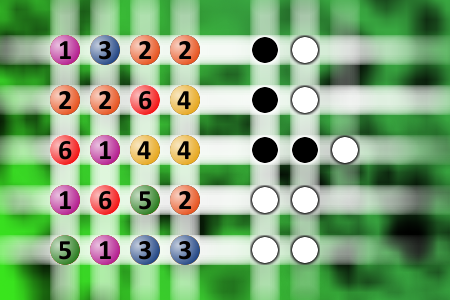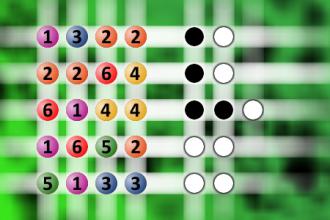Which is a winning combination of digits?
The computer chose a secret code (sequence of 4 digits from 1 to 6). Your goal is to find that code. Black circles indicate the number of hits on the right spot. White circles indicate the number of hits on the wrong spot.Correct answers: 6
#brainteasers #mastermind

Two Women at the Pearly Gates
Two women are new arrivals at the pearly gates and are comparing stories on how they died.
Woman #1: I froze to death.
Woman #2: How horrible!
Woman #1: It wasn't so bad. After I quit shaking from the cold, I began to get warm and sleepy, and finally died a peaceful death. What about you?
Woman #2: I died of a massive heart attack. I suspected that my husband was cheating, so I came home early to catch him in the act. But instead, I found him all by himself in the den watching TV.
Woman #1: So what happened?
Woman #2: I was so sure there was another woman there somewhere that I started running all over the house looking. I ran up into the attic and searched, and down into the basement. Then I went through every closet and checked under all the beds. I kept this up until I had looked everywhere, and finally I became so exhausted that I just keeled over with a heart attack and died!
Woman #1: Too bad you didn't look in the freezer. We'd both still be alive.
Woman #1: I froze to death.
Woman #2: How horrible!
Woman #1: It wasn't so bad. After I quit shaking from the cold, I began to get warm and sleepy, and finally died a peaceful death. What about you?
Woman #2: I died of a massive heart attack. I suspected that my husband was cheating, so I came home early to catch him in the act. But instead, I found him all by himself in the den watching TV.
Woman #1: So what happened?
Woman #2: I was so sure there was another woman there somewhere that I started running all over the house looking. I ran up into the attic and searched, and down into the basement. Then I went through every closet and checked under all the beds. I kept this up until I had looked everywhere, and finally I became so exhausted that I just keeled over with a heart attack and died!
Woman #1: Too bad you didn't look in the freezer. We'd both still be alive.

